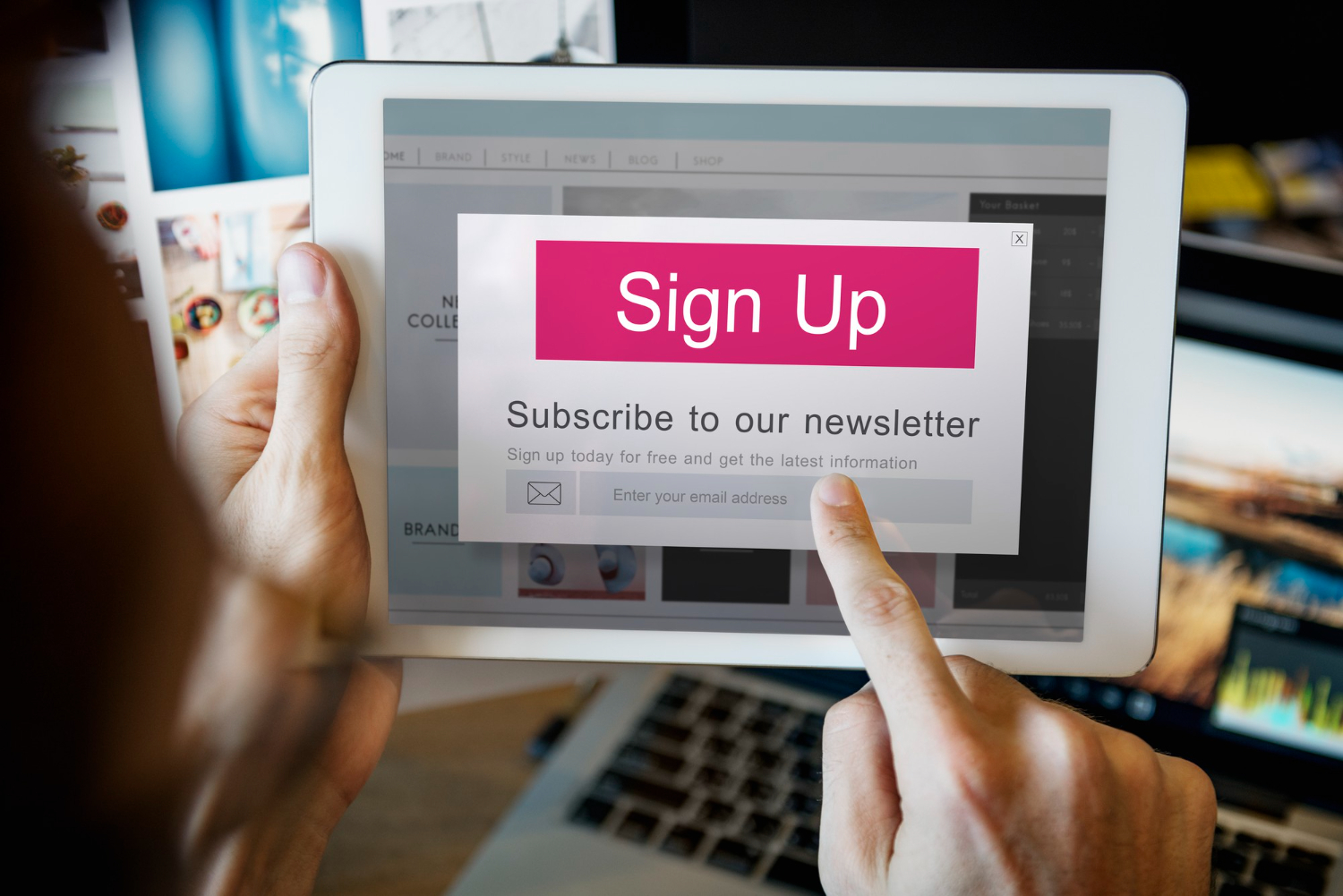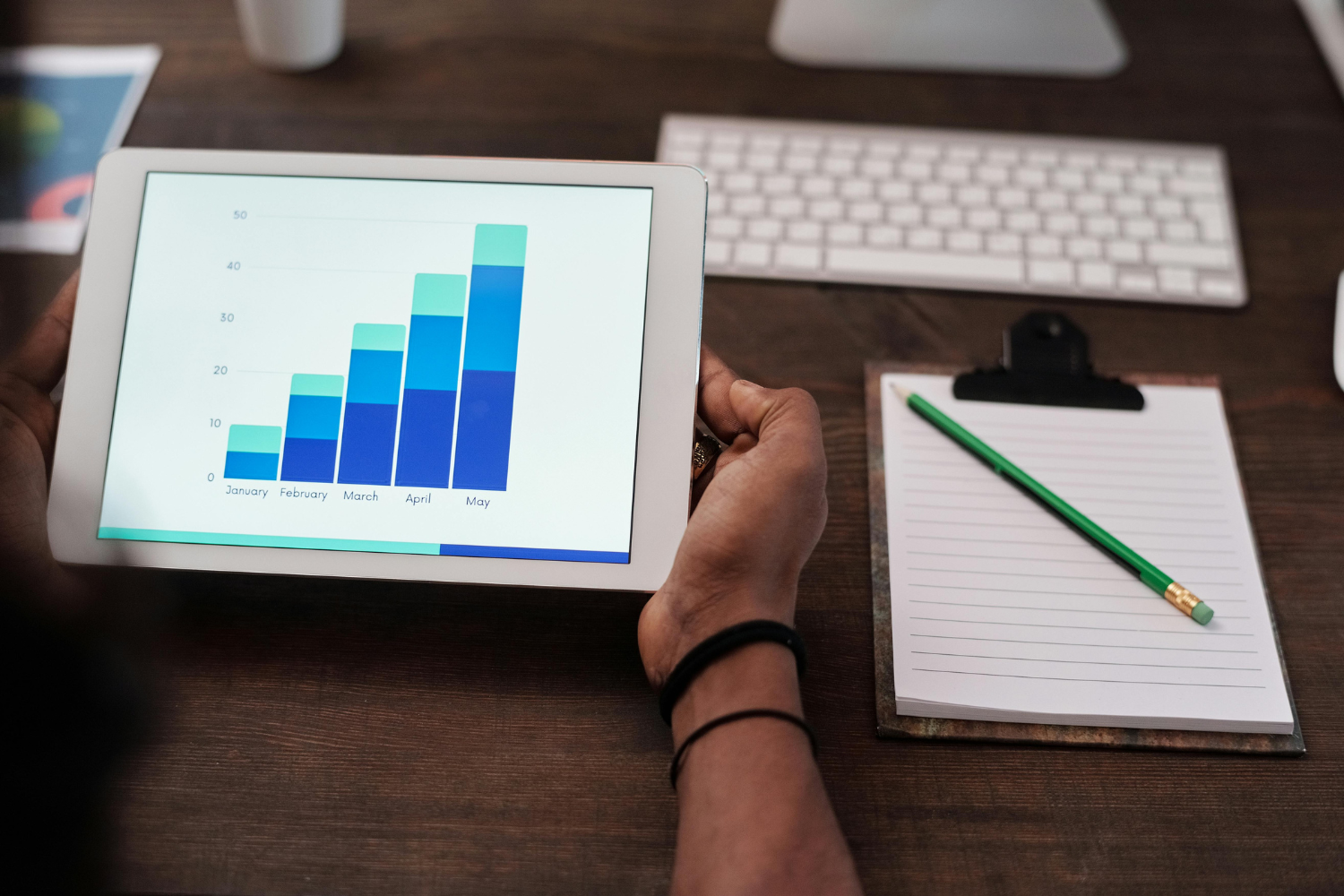26 Mar, 2024 • 10 min read
Newsletters: Strategies, Tips, and Trends for Effective Communication

A newsletter is a type of publication that’s usually sent regularly to a group of people. It’s a powerful tool for staying in touch directly with your audience. Whether it’s sent by email or through the post, a newsletter can share news, tips, or updates from your business or community. The key idea behind a newsletter is direct communication. It allows you to reach out to your audience without relying on outside platforms, making sure your message gets right into their hands or inboxes.
Contents
The Evolution of Newsletters
Back in the day, newsletters started as physical, printed documents that organizations would mail out to their subscribers. Over time, as technology advanced, these printed newsletters transformed into digital formats. This switch made it easier and quicker to reach a wider audience at a fraction of the cost. Today, digital newsletters are an essential part of how organizations communicate with their followers, offering up-to-date information directly to subscribers’ inboxes. From their humble beginnings on paper to the dynamic, interactive digital versions we see today, newsletters have come a long way. This shift not only reflects changes in technology but also in how we prefer to receive and engage with information.

Why Newsletters Matter in Marketing
Newsletters are more than just messages; they’re a vital component of a marketing strategy. In today’s crowded digital landscape, getting your brand noticed and remembered is a challenge. That’s where newsletters come in. They allow you to build a direct line of communication with your audience, fostering a sense of community and loyalty. Through consistent delivery of valuable content, a newsletter can enhance your brand’s visibility and reinforce its identity. This ongoing connection not only keeps your audience informed but also elevates your brand above competitors by regularly reminding subscribers of your presence and value.
Building Brand Authority
One of the most significant benefits of newsletters is their ability to establish trust and demonstrate brand authority. Consistently sharing knowledgeable content that benefits your audience positions your brand as an expert in your field. This isn’t just about selling a product or service; it’s about providing real value that enriches your subscribers’ lives or businesses. For instance, a newsletter from a gardening supply company might include seasonal planting tips, showcasing their expertise and increasing their audience’s engagement and trust. Over time, this trust fosters loyalty, making subscribers more likely to choose your brand when they’re ready to make a purchase.
Crafting Your Newsletter
Creating a compelling newsletter involves careful planning and execution. Start with a clear goal: What do you want your newsletter to achieve? Who is your audience? What kind of content will they value? Answering these questions will help guide your content creation, design, and scheduling. The next step is to design your newsletter. Keep it visually appealing and easy to navigate. Finally, consider your delivery strategy; timing can be crucial, depending on your audience’s habits and preferences. A well-crafted newsletter is not just about sharing information; it’s about engaging your audience in a way that feels personal and valuable.
Content Is King
In the realm of newsletters, high-quality, valuable content reigns supreme. Your subscribers have invited you into their inbox because they believe you have something worthwhile to offer. This could be insightful industry analysis, helpful tips, exclusive offers, or the latest news about your products or services. The key is to deliver content that resonates with your audience, meets their needs, or solves their problems. Remember, the primary purpose of your newsletter is to engage and inform, not just to sell. Offering content that is both interesting and useful will ensure that your readers stay subscribed and look forward to each edition of your newsletter.

Key Components of Successful Newsletters
Successful newsletters share several essential elements that capture and keep the reader’s attention. Firstly, a clear and captivating subject line is crucial; it’s your first and sometimes only chance to make an impression. The content must be engaging and relevant, organized in a way that’s easy to read, with headlines, short paragraphs, and bullet points. High-quality images can also enhance the appeal, making the newsletter more visually engaging. Another key component is the call-to-action (CTA); every newsletter should encourage readers to take a specific action, whether it’s visiting a website, signing up for a webinar, or making a purchase. Finally, personalization can dramatically improve open rates and engagement, making each reader feel the content was crafted just for them.
Personalization and Segmentation
The impact of personalization and audience segmentation on newsletter success cannot be overstated. Personalization means addressing the subscriber by name and tailoring the content to their interests and behaviors. Segmentation takes this a step further by dividing your audience into groups based on specific criteria like location, purchase history, or engagement level. This allows you to send more targeted, relevant content to each segment, significantly improving the effectiveness of your newsletters. For example, a clothing retailer might send different newsletters to customers interested in men’s wear and women’s wear. By making each newsletter feel like it’s been personally curated, you’re much more likely to engage your audience and drive action.
Measuring Newsletter Success
Understanding how to measure and analyze the performance of your newsletters is crucial for continuous improvement. Metrics such as open rates, click-through rates (CTR), and conversion rates can provide valuable insights into how your audience is interacting with your content. Analyzing these metrics allows you to identify what’s working and what’s not, so you can adjust your strategy accordingly. For instance, if you notice that newsletters with certain types of subject lines have higher open rates, you can use similar language in future communications. Consistently monitoring these metrics will help you refine your approach over time, leading to more effective and successful newsletters.
Key Performance Indicators (KPIs)
Key Performance Indicators (KPIs) are vital to track for understanding the success of your newsletter campaigns. These include Open Rate, which tells you the percentage of recipients who opened your newsletter; Click-Through Rate (CTR), which measures how many people clicked on a link within your newsletter; and Conversion Rate, indicating how many of those clicks turned into a desired action, such as a purchase or sign-up. Other important KPIs include the growth rate of your subscriber list, the bounce rate (emails that couldn’t be delivered), and the unsubscribe rate, which can signal how relevant and engaging your content is to your audience. Keeping an eye on these metrics will give you a clear picture of how your newsletter performs and where there’s room for improvement.
Advanced Newsletter Strategies
To truly stand out, consider implementing advanced techniques and strategies to enhance newsletter engagement. This might include segmenting your audience more finely to provide hyper-targeted content or using dynamic content that changes based on the recipient’s preferences or past behavior. Another strategy is A/B testing different components of your newsletter, such as subject lines or call-to-action buttons, to see what resonates most with your audience. Incorporating interactive elements such as polls, surveys, or animated GIFs can also increase engagement by making your newsletter more dynamic and interesting. Leveraging these advanced strategies can take your newsletter from good to great, creating a more engaging and personalized experience for your subscribers.
Automation and AI
The role of automation and AI in personalizing and scaling newsletter efforts cannot be overlooked. Automation tools allow you to schedule newsletters in advance, send welcome emails to new subscribers automatically, and trigger specific emails based on user actions, like making a purchase or abandoning a cart. AI can take personalization to the next level by analyzing data on subscriber behavior and preferences to automatically tailor the content, timing, and frequency of newsletters for each subscriber. This not only makes your newsletters more relevant and engaging but also significantly increases efficiency, allowing you to focus on creating great content rather than managing the logistics of email campaigns.
Common Newsletter Mistakes to Avoid
When designing and sending newsletters, there are several common pitfalls to be aware of. One significant mistake is neglecting your audience’s preferences and interests, leading to generic content that doesn’t engage. Another error is overloading your newsletter with too much information or too many calls to action, which can overwhelm subscribers and dilute your message. Failing to optimize for mobile devices is also a critical mistake, as a significant portion of emails are now read on smartphones and tablets. Additionally, not paying attention to the frequency of your newsletters can either saturate your audience or make them forget about you. Finally, neglecting to clean your email list regularly can result in a high bounce rate and low engagement. Avoiding these mistakes will help ensure your newsletters remain a valuable and anticipated communication by your audience.
Conclusion: The Future of Newsletters
As we look to the future, it’s clear that newsletters will continue to evolve alongside technology and audience preferences. Personalization and automation will become even more sophisticated, allowing for even more targeted and relevant content. The integration of AI will further enhance the ability to understand and predict subscriber behavior, making newsletters more interactive and responsive. We may also see new formats and platforms for newsletter distribution, including integration with social media and other digital channels. Despite the changes, the core purpose of newsletters—to build and maintain a direct connection with your audience—will remain paramount. As long as there are stories to tell and updates to share, newsletters will remain a key component of digital communication strategies.
FAQs
1. What makes a newsletter successful?
A successful newsletter is one that consistently engages its audience with high-quality, relevant content and maintains a direct, personal connection with its subscribers.
2. How often should I send out newsletters?
The frequency should be based on your capacity to produce valuable content and your audience’s preferences. It could range from daily to monthly, depending on what works best for your subscribers.
3. What content should be included in a newsletter?
Content should be relevant to your audience’s interests and can include updates, news, tips, offers, insights, and stories related to your field or industry.
4. How can I measure the impact of my newsletter?
Measure the impact by tracking KPIs such as open rate, click-through rate, conversion rate, subscriber growth rate, bounce rate, and unsubscribe rate.
5. What are the latest trends in newsletter marketing?
The latest trends in newsletter marketing focus on personalization, automation, interactivity, and integration with other marketing channels. Personalization and automation technologies are becoming more sophisticated, allowing for newsletters that are highly customized to each subscriber’s interests and behaviors. There’s also a growing emphasis on making newsletters more interactive, using elements like polls, quizzes, and videos to engage readers more deeply. Additionally, integrating newsletters with social media and content marketing strategies is becoming more common, providing a seamless experience across all platforms. Finally, there’s a trend towards more narrative-driven content, where stories and experiences are used to connect with the audience on a more personal level. These trends reflect a broader move towards more engaging, relevant, and valuable newsletter content, designed to build lasting relationships with subscribers.

Ankur
Ankur, with over 20 years of expertise, simplifies the complex world of online marketing to boost your conversion rates. He shares actionable insights that anyone can apply to see immediate results. Trust Ankur to guide you through proven strategies that enhance your online presence and profitability.
Related Blogs

By Ankur • 14 min read
Email Newsletters Explained: Strategies and Best Practices
Email newsletters are a powerful tool in the world of digital marketing. They are emails sent out by businesses or individuals to a list of...

By Ankur • 4 min read
The Ultimate Guide to Build Email Newsletter
Are you looking to supercharge your digital marketing strategy? Look no further than the power of newsletters. In this ultimate guide, we will delve into...
Metrics
Conversion
